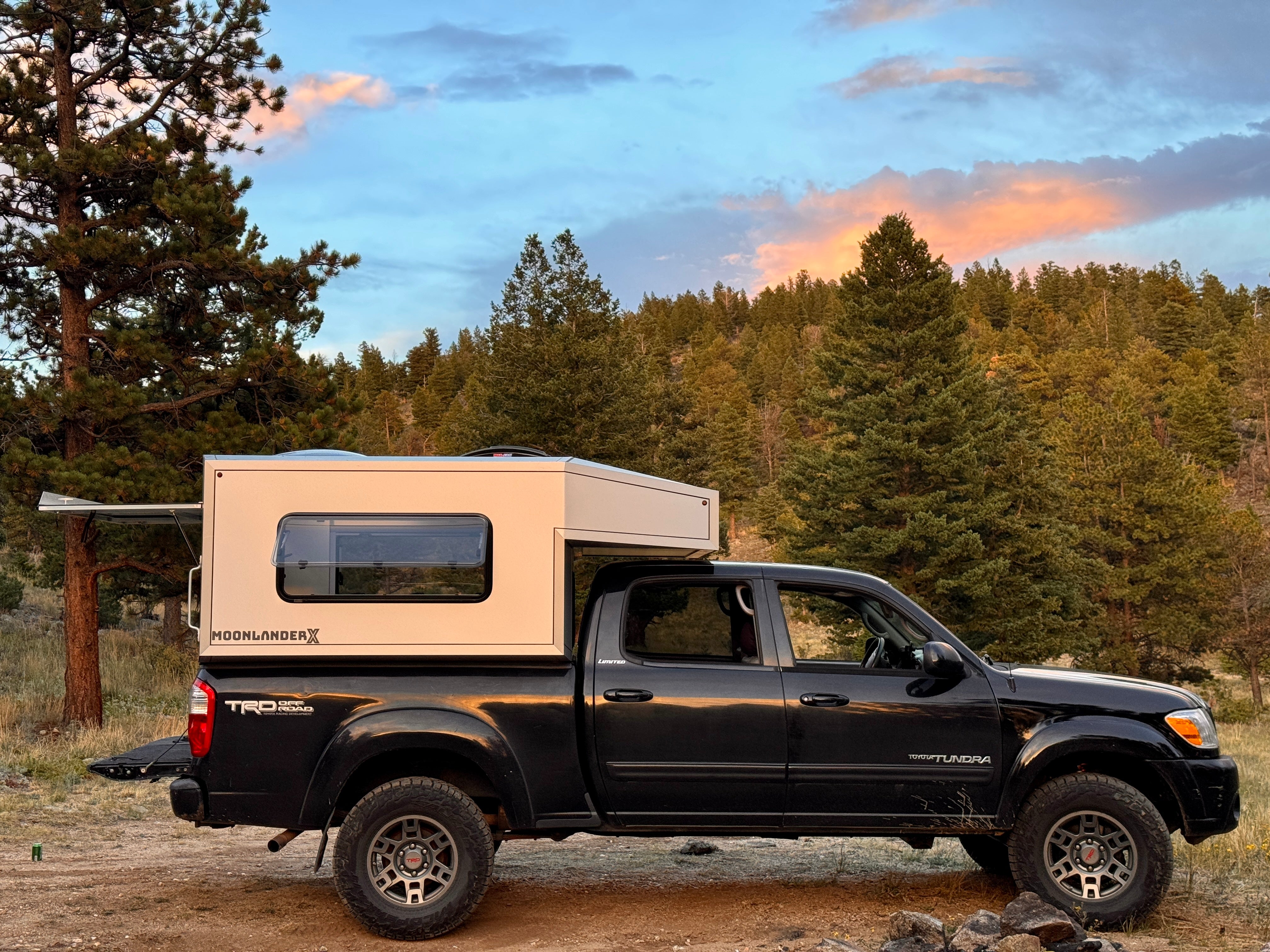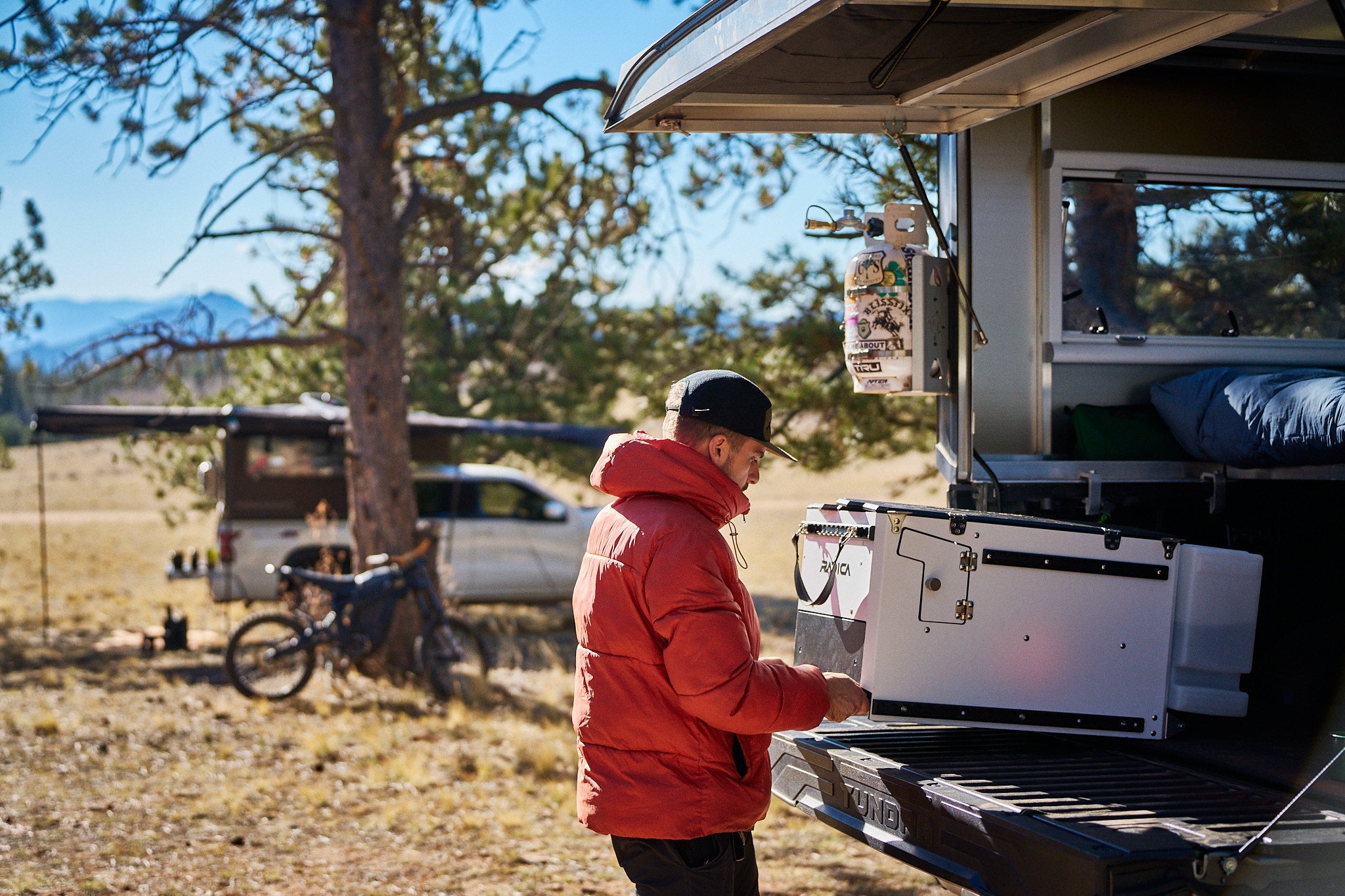When the leaves fall and snow starts to dust the peaks, many campers pack it in and hibernate until spring. But for MoonLander adventurers, cold-weather camping opens a whole new world of serenity, snow-covered trails, and peaceful campgrounds free from the summer rush. With the right gear, preparation, and a little cold-weather know-how, your MoonLander can become a warm, cozy refuge in the chill of late fall and even deep winter. Whether you're planning a November trip into the mountains or a snowy New Year’s escape, this guide walks you through how to insulate, heat, protect, and optimize your MoonLander for a safe and enjoyable cold-weather camping experience.
The first step to successful winter camping is insulation. Your MoonLander is designed with a durable, weather-resistant shell, but a few additions can help trap heat and reduce drafts. Start with the windows. If you have clear polycarbonate or acrylic side windows, cut Reflectix insulation panels to fit each one. These reflective covers trap radiant heat and can be easily removed during the day. If your MoonLander features sliding or vented windows, make sure rubber seals are tight and in good condition. Adding thermal curtains or magnetic insulation panels inside the camper creates another barrier between you and the cold. The ceiling is another spot where heat loss occurs. Consider adding a layer of insulated foam board, fabric-wrapped panels, or even a layer of Thinsulate to the roof. On the floor, rubber mats, wool rugs, or foam tiles provide warmth underfoot and block cold seeping up from below.
Next up: heating options. There are several ways to warm your space, depending on how off-grid you plan to go. A propane heater, such as the Mr. Heater Buddy, is a favorite among overlanders for its ease of use and portability. Make sure to always crack a window and install a carbon monoxide detector if you’re using a combustion heater inside. For electric heat, if you have access to shore power or a powerful battery bank, a low-watt ceramic space heater can take the edge off without draining resources too quickly. For ultra-cozy nights, 12V heated blankets or sleeping pad heaters use minimal power and provide direct warmth. Don’t underestimate the power of good old-fashioned layering: bring extra fleece blankets, down sleeping bags rated to 0°F or lower, and thermal pajamas. Sometimes the best way to heat your camper is to heat yourself.
With the warmth comes another challenge: moisture control. Cold air holds less moisture, which means condensation becomes a big concern—especially overnight when you’re breathing inside a small space. To prevent buildup on your windows and ceiling, always crack a vent or window slightly to allow air exchange. A small battery-powered fan can help circulate warm air and reduce moisture. Use moisture absorbers, like DampRid or desiccant packets, especially near your bedding and gear. Wipe down any condensation in the morning to prevent mold or mildew. Keep wet clothes and boots outside the camper or in a sealed bin to avoid bringing in excess humidity.
Let’s talk gear. Your cold-weather camping kit should be curated for comfort and safety. Start with four-season sleeping bags—look for mummy bags with draft collars and hoods. If you sleep with a partner, double sleeping bags with extra insulation are a great option. Bring thermal base layers, thick socks, and a warm hat for sleeping. Gloves, gaiters, and a neck warmer will keep you warm during early morning routines. A portable propane stove makes winter cooking possible even when fires are banned, and insulated mugs and bowls help food and drinks stay hot longer. Always keep your water from freezing—store bottles inside the camper or in insulated containers. Collapsible jugs with a wide mouth are easiest to thaw if they do freeze. Consider bringing a headlamp with extra batteries, as winter nights are longer and colder, and cold temps can zap battery life quickly.
Another area to prep is your MoonLander’s exterior and storage compartments. Make sure the rear hatch and door seals are clean and intact. Lube hinges and latches to prevent freezing. If your camper has an exterior cargo box or side cabinets, consider lining them with foam or reflectix to insulate gear. Keep snow brushes and a small shovel accessible—not buried beneath your gear. Install all-terrain or winter-rated tires on your vehicle, and keep traction boards, chains, and an emergency recovery kit handy if you’re venturing into snowy or icy terrain. Always check the weather before departure and have a Plan B in case roads close or storms roll in.
One of the best things about cold-weather camping is the quiet. Campgrounds are often empty, wildlife is more visible, and snowy landscapes create a stunning backdrop for morning coffee or evening stargazing. To enjoy it all, set up a weather-resistant camp space. Consider adding a roof awning with side walls to create a windbreak or outdoor cooking area. A pop-up privacy tent can house a portable toilet or changing area, keeping snow and wind out while adding comfort to your setup. LED string lights add cheer and visibility in the long winter evenings, and a folding table with windscreen makes meal prep manageable even when the temperature drops.
Finally, embrace the mental shift of winter camping. You’re not racing daylight hours like in summer—you’re savoring the slower pace. Pack games, books, hot chocolate, and a journal. Learn to love the rituals: brewing coffee in the cold, bundling up to watch the sunrise, stargazing with a blanket wrapped around you. The MoonLander’s minimalist but cozy interior makes it all possible without feeling cramped or exposed to the elements. It’s your personal cabin on wheels, ready for snowy peaks, frosty forests, and peaceful lakeside camps.
With the right planning, your MoonLander becomes more than just a summer escape—it becomes a year-round adventure rig. From insulated windows to propane heaters, from moisture management to rugged tires, each step of cold-weather prep turns your camper into a warm, welcoming retreat when the temperatures fall. So layer up, pack a thermos, and hit the road. Winter’s waiting, and your MoonLander is ready.




Leave a comment
This site is protected by hCaptcha and the hCaptcha Privacy Policy and Terms of Service apply.